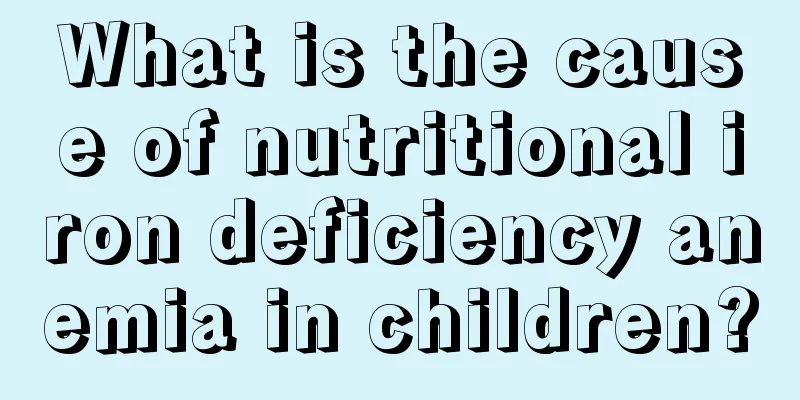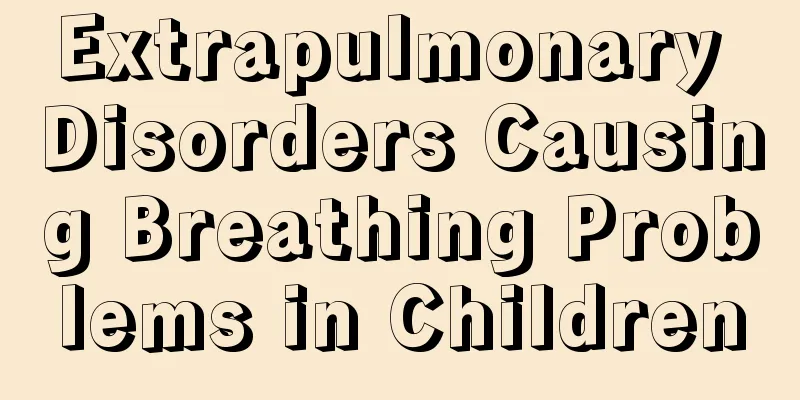What is the cause of nutritional iron deficiency anemia in children?

|
Nutritional iron deficiency anemia in children is one of the most common diseases in the world. The incidence rate is even higher in some developing countries. In our country, the incidence rate of nutritional iron deficiency anemia among children in rural areas is significantly higher than that in urban areas. This disease can be effectively prevented if attention is paid to the nutritional diet of children. Here is a brief introduction to some of the causes of nutritional iron deficiency anemia in children. Nutritional anemia is a disease with a high incidence in my country. About 30-40% of babies under 3 years old have anemia to varying degrees, among which the most common incidence occurs in children aged 6 months to 2 years. The onset of nutritional anemia is relatively regular. Clinically, it is found that most of the children are born between 6 months and 2 years old. This period is the budding stage of the child, which is the period from the beginning of the growth of deciduous teeth to the complete development of deciduous teeth. After this period, the incidence of nutritional anemia decreases. There are four common causes of anemia. The first is congenital iron deficiency. A normal fetus obtains about 225 mg of iron from the mother, which is enough for growth in the first 4-5 months after birth. If the mother has severe iron deficiency anemia, the child's iron reserves are often insufficient. Or if the child is premature or has multiple births, the iron obtained from the mother is insufficient, causing anemia 3-4 months after birth. The second situation is the factors of growth and development. As the baby grows and develops rapidly and gains weight, the need for iron increases accordingly. If sufficient iron is not supplied in time, anemia may occur. There are many causes of nutritional iron deficiency anemia in children. In addition to the reasons introduced above, there are also congenital reasons that lead to insufficient iron storage in the body, which can eventually lead to anemia. In addition, if the fetus bleeds too much during delivery, or if the mother suffers from anemia during pregnancy, it can also lead to nutritional iron deficiency anemia in children. |
<<: What are the symptoms of hypoglycemia in children?
>>: How to supplement children with anemia
Recommend
What kind of soup is nutritious for children
The physical health of children is the most conce...
Can a two-year-old child brush his teeth?
Everyone knows the importance of teeth. If teeth ...
What should I do if my child has night sweats due to physical weakness?
When people are infants, their organs are not ful...
How to train a four-month-old baby who cannot hold his head upright?
When the baby is just born, because the bones hav...
How to treat hair loss in teenagers?
Hair loss is a physiological phenomenon that occu...
What causes children to have eye bags and dark circles?
The physical health of children is the most impor...
What to do if your baby is frightened
Babies are easily frightened when they are young....
How to correct a child's hunchback?
When families see that their children cannot walk...
What should I do if my child has a runny nose due to heat?
When seeing their children with a runny nose, mos...
Can babies eat peaches when they have a fever?
It is very common for babies to have fever sympto...
What’s going on if my three-year-old baby has blisters on his feet?
The skin on the baby's feet is quite differen...
15-month-old baby girl's height and weight
After having a baby, we as parents cannot be idle...
Diet therapy for children's respiratory diseases
Respiratory diseases are diseases that we often e...
What to do if your baby has candida infection
Candida is suitable for a wide range of people. B...
Symptoms of viral fever in children
It is very common to catch a cold and a fever whe...









